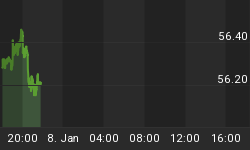The platinum price took a heavy beating when the Great Tohoku Earthquake struck Japan on March 11 and seemed to recover afterwards before retreating recently.

Sources: I-Net Bridge; Plexus Asset Management.
The recovery and subsequent recent decline was more a reflection of cross-rate movements of the US dollar than anything else as the platinum price in terms of euro has remained in a very narrow range since the end of March.

Sources: I-Net Bridge; Plexus Asset Management.
The weakness of the platinum price is more apparent if it is compared to gold. Since Japan's twin disasters, platinum's premium to gold has been in a downtrend, falling from $366 to $270 or by 26.2% at Friday's close.

Sources: I-Net Bridge; Plexus Asset Management.
In terms of euro the premium fell to 191 from 234 or 18.4%.

Sources: I-Net Bridge; Plexus Asset Management.
But why the massive hit on platinum?
The Japanese auto industry was hit particularly hard by the earthquake and tsunami that followed. Japan's production of cars and trucks fell by 535,000 units or 57.3% in March compared to March last year. Toyota was scheduled to resume production in the second half of April, but only to 50% of normal production. If I assume that only 50% of cars and trucks were produced in April compared to last year, this will mean a loss of another 313,000 vehicles. If production in May returns to 75% of the same month last year, another 180,000 vehicles would have been lost compared to last year's total production of 9.5 million cars and trucks. Those production losses add up to a staggering 1,028 million vehicles or nearly 11% of 2010 production! The impact of the Kobe disaster in January 1995 was miniscule compared to that of the twin disaster in March. I estimate that the production of only approximately 40,000 units were lost in January that year while production returned to normal in February.
Japan consumed a gross 535,000 ounces of platinum for auto-catalysts in 2010. It therefore means that Japan's auto industry uses on average 0.054 ounces of platinum per vehicle. It therefore transpires that since March platinum demand from the Japanese auto industry alone has dropped by approximately 58,000 ounces. That excludes the ripple effect of supply disruptions in other countries such as Malaysia that saw auto production in that country slipping by 24.7% in April. I will not be surprised if the loss of the total demand for platinum in the global auto industry this year could add up to in excess of 100,000 ounces or 1.7% of last year's total supply. While it seems small, the 100,000 ounces should be compared to the average investment demand of approximately 55,000 ounces (2008-2010). That is huge!
The big question is when the platinum price will start to recover. I think it is generally accepted that this time the damage to Japan's economy and infrastructure is significantly worse than after the Kobe disaster. The main difference between now and then is that the yen has not been allowed to weaken against the US dollar to the same extent as in 1995 when Japan's exports to the US were seriously hampered.

Sources: I-Net Bridge; Plexus Asset Management.
Immediately after the twin disaster Japan's export markets were also supported by the weakening of the yen against the euro.

Sources: I-Net Bridge; Plexus Asset Management.
I think it is only a question of time before platinum's premium to gold will be restored. In 1995 it took approximately 53 working days after the disaster before the premium started to open up. We are now on the 45th day!

Sources: I-Net Bridge; Plexus Asset Management.
In 1995 we saw a jump of more than 10% in the platinum price when the market realized the underlying value of the metal compared to other precious metals. Will we see it again? Well, take a look at what the professionals are saying!

Sources: CFTC; Plexus Asset Management.
Where the net long futures position of non-commercial traders on NYMEX tumbled in the week of the twin disaster, net positions have increased by 8,489 contracts or 424,450 ounces from a low of 18,503 contracts in the second half of March and are currently approaching the pre-disaster levels.
I am adding platinum to my portfolio!
Did you enjoy this post? If so, click here to subscribe to updates to Investment Postcards from Cape Town by e-mail.
















